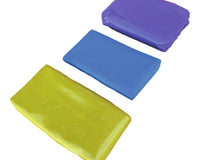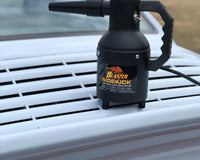Detailing a classic car isn’t just about cleaning; it’s about preserving a piece of history and enhancing its unique beauty. Classic cars, often cherished for their vintage charm and historical significance, require a more delicate touch and specialised care compared to modern vehicles. Detailing these beauties involves using the right techniques, products, and understanding their specific needs. In this guide, we’ll cover essential steps, unique considerations, and products ideal for classic car detailing to ensure your vintage ride stays pristine.
Understanding Classic Car Surfaces and Materials
Classic cars often feature materials and finishes that differ from those on contemporary vehicles. From original chrome accents and older paint types to leather interiors and wooden trims, classic cars require tailored care to maintain their authentic look.
Antique Paint Finishes
Older cars usually have single-stage paint, which doesn’t include a clear coat like modern paint jobs. This paint can be more vulnerable to damage and oxidation, requiring extra care. Regular polishing and waxing, using products designed specifically for vintage paints, help preserve the colour and shine without damaging the surface.
Delicate Interior Materials
Vintage leather and fabric interiors can wear down more easily than the materials used in modern cars. You’ll need gentle, pH-balanced cleaning products that won’t strip the natural oils from leather seats or fade older fabrics. Preserving these materials maintains the car’s original look, a key aspect in classic car detailing.
Chrome and Metal Accents
Chrome trims, emblems, and other metal finishes in classic cars are often more susceptible to rust and tarnish than modern, treated chrome. Using non-abrasive metal polish is essential, as harsh products may scratch or dull these precious features, affecting the car’s authenticity.
Prepping the Car: Wash and Rinse Carefully
The first step in detailing a classic car is a thorough wash to remove any dust, dirt, or grime from its surface. Classic cars, due to their age and potential fragility, need extra care during this stage.
Using Gentle Cleaners
Choose a pH-balanced car shampoo that’s free of harsh chemicals to protect delicate paint and finishes. Use a two-bucket wash method—one bucket for soapy water and another for rinsing the wash mitt—to avoid reintroducing dirt onto the car’s surface. This approach minimises the risk of scratches.
Gentle Washing Techniques
Use a high-quality, soft microfibre mitt to prevent swirling and scratching on sensitive paintwork. Begin washing from the top of the vehicle, moving downwards to avoid dragging dirt from lower sections over cleaner areas. For drying, use a microfibre towel and gently pat the surface dry to prevent water spots and streaks.
Paint Care: Polishing and Waxing
Classic cars often have older paint, which can be prone to oxidation, fading, and scratches. Proper polishing and waxing will help restore and protect the paint, giving your classic car the shine it deserves.
Choosing a Mild Polish
Use a non-abrasive polish designed for classic car paint. These products gently remove oxidation and minor scratches without wearing down the paint layer. When polishing, use a dual-action polisher if possible, as it’s less aggressive and safer for older paint finishes than a rotary polisher.
Applying a Quality Wax
Waxing not only enhances shine but also provides a protective layer against dirt, UV rays, and other contaminants. Carnauba wax is ideal for classic cars as it provides a deep, natural shine. Apply it with a soft foam applicator in circular motions, allowing it to cure before buffing it with a microfibre towel. Regular waxing helps maintain the paint’s vibrancy and protects it from environmental factors.
Chrome Detailing: Restoring Shine Without Damage
The chrome accents on classic cars are often focal points that enhance their vintage appeal. However, they can also be more vulnerable to corrosion and tarnish, requiring special attention during detailing.
Cleaning and Polishing Chrome
Use a gentle chrome cleaner to remove dirt and oxidation, then follow up with a non-abrasive chrome polish. Products specifically designed for older chrome finishes are best, as they are formulated to remove tarnish without causing damage. Use a microfibre cloth to buff chrome surfaces, bringing out their original gleam.
Protecting Against Future Tarnish
Once the chrome is clean and polished, consider applying a chrome sealant to protect against tarnish and rust. This will help maintain the shine for longer and make future cleaning easier.
Caring for Vintage Leather and Interior Fabrics
The interior of a classic car requires just as much attention as the exterior. Many classic cars feature leather, vinyl, or fabric materials that can deteriorate over time if not properly maintained.

Cleaning Leather Seats
Use a pH-neutral leather cleaner that’s safe for vintage leather. Apply the cleaner with a soft brush, working it gently into the material, and then wipe it clean with a microfibre towel. Avoid harsh products that could strip natural oils from the leather, causing it to dry and crack.
Conditioning for Long-Lasting Protection
Conditioning is essential for preserving the leather’s supple quality and preventing premature wear. Choose a conditioner specifically formulated for classic car leather, as it provides hydration and a layer of protection against sunlight and environmental damage.
Detailing Wooden and Unique Interior Elements
Some classic cars have wooden trim or unique interior materials that add character but require special care. Cleaning and preserving these elements maintains the car’s original charm.
Cleaning Wood with Care
Use a specialised wood cleaner to remove dirt from wooden trim without damaging the finish. Avoid excess moisture, as it can cause wood to swell or warp. After cleaning, apply a protective wood polish to maintain shine and protect it from future wear.
Avoiding Damage to Older Plastics
Older plastics may be more brittle than modern ones. Use a non-abrasive cleaner and a soft cloth for gentle cleaning, avoiding harsh chemicals that could cause fading or cracking. For added protection, apply a plastic conditioner to keep these elements looking their best.
Choosing the Right Products for Engine Bay Detailing
Cleaning the engine bay of a classic car should be done with caution, as certain older components can be sensitive to water and chemicals. Keeping the engine bay clean not only enhances the car’s appearance but also improves its functionality.
Using Non-Water-Based Cleaners
Water can be a risk factor for older electrical components and connectors, so using a waterless engine cleaner or a degreaser applied with a brush is advisable. Brush gently around components, using a cloth to wipe away grease and dirt.
Protecting Exposed Components
After cleaning, use an engine bay dressing to protect exposed metal and rubber components from corrosion and degradation. A silicone-free dressing is ideal, as it won’t attract dust or cause buildup.
Final Touches and Long-Term Protection
Once the major areas of the car are detailed, adding some final touches can elevate the appearance and offer long-term protection. These steps help your classic car look showroom-ready while adding a layer of defence against future wear.
Applying a Detailing Spray
Using a high-quality detailing spray as a finishing touch helps remove any remaining smudges, fingerprints, or dust. This leaves the car with a brilliant finish, enhancing all the hard work you’ve done throughout the detailing process.
Storing Your Classic Car Safely
For the best preservation, store your classic car in a climate-controlled environment. Use a quality car cover that’s gentle on paint to shield it from dust and other environmental factors. Regularly checking and detailing your car will keep it in prime condition.
Conclusion: Keeping Your Classic Car Timeless
Detailing a classic car involves a deep respect for its history and craftsmanship. By understanding the specific needs of older materials and surfaces, you can keep your vintage vehicle in pristine condition. From careful washing techniques and paint preservation to gentle interior care, each step helps maintain your car’s beauty and value. Investing in the right products and techniques will allow you to enjoy the unique elegance of your classic car for years to come.




